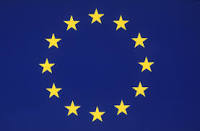EU seeks peace in South Sudan

EU foreign policy chief Catherine Ashton is dispatching an envoy to assist in seeking a political solution to the conflict in South Sudan.
Maja Kocijancic, a spokeswoman for Ashton, said on Wednesday that she had asked EU special representative Alex Rondos to immediately go to the region and liaise directly with neighboring countries and concerned organizations on the ground.
“It is essential that all political leaders commit immediately to a political dialogue to resolve their differences,” Kocijancic added.
Clashes broke out near South Sudanese capital, Juba, between government troops and forces loyal to former vice president Riek Machar, on December 15, when President Salva Kiir accused Macher of trying to stage a coup against the government.
On December 24, the United Nations Security Council unanimously adopted a resolution to authorize UN Secretary General Ban Ki-moon’s plan, which would raise the number of the UN forces in South Sudan (UNMISS) to 12,500 soldiers and 1,323 police forces in response to fears of a worsening conflict in the African country.
UN humanitarian chief in South Sudan Toby Lanzer has said that there was “no doubt” the number of people killed in the recent violence in the country was in thousands.
The UN High Commissioner for Human Rights Navi Pillay has also said that a mass grave holding as many as 34 bodies has been found in Bentiu, the capital of Unity state.
The United Nations has warned of a humanitarian crisis in South Sudan which gained independence in 2011 after its people overwhelmingly voted in a referendum for a split from the North.







